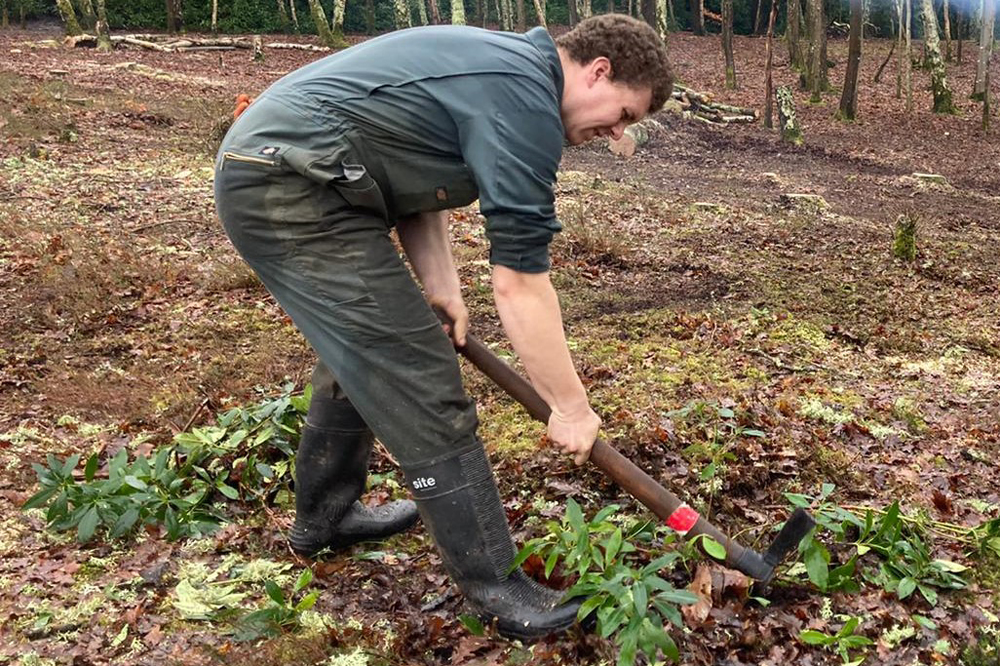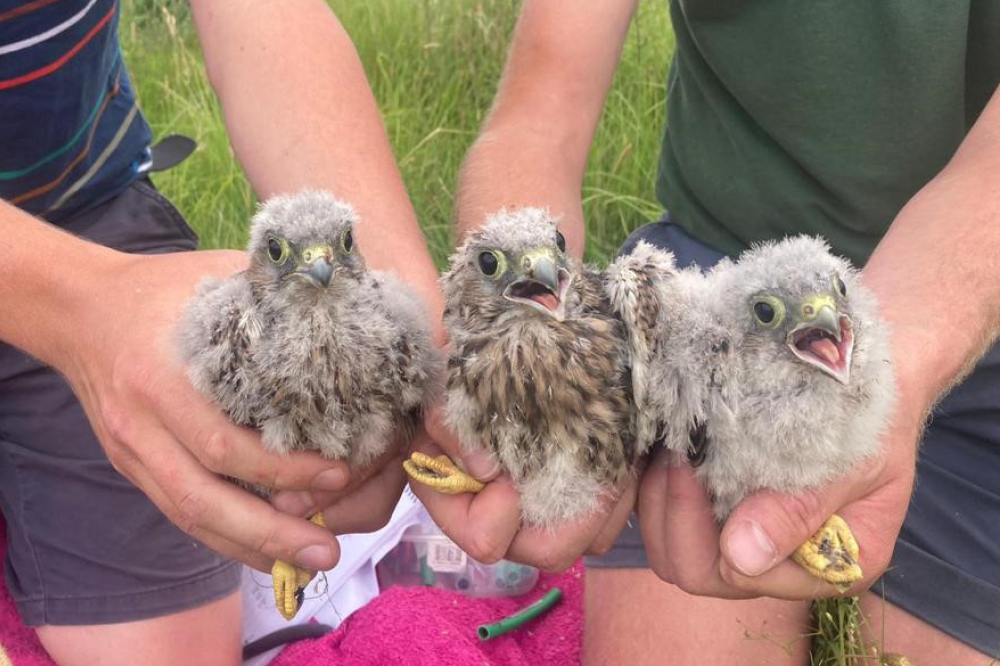We work hard to support and foster the wealth of biodiversity across our countryside sites.

Thanks to the work of our Parks and Countryside team and our fantastic conservation volunteers and Friends groups we are seeing a huge difference. Here are some examples of where you can go to enjoy all our wildlife and see the work we do to manage the land under our stewardship across the District.
Leechpool and Owlbeech Woods
These woods (pictured) on the edge of Horsham are home to a rich mix of ancient woodland and restored and carefully managed heathland, spread over some 53 acres. As part of our ongoing land management strategy, grazing animals are used on a number of our sites including Owlbeech Woods, to help create and maintain the woodland and heathland habitats. The heathland here is improving each year and now hosts a variety of reptiles, with Adders, Grass Snakes, and Slow-worms often spotted basking in the sunny edges of the paths.
Horsham Park
Over the summer residents may have noticed a change in the mowing regime in a number of our parks, including Horsham Park. In selected areas the grass has been allowed to grow longer, forming grass meadows which improve biodiversity as native grasses and wild flowers start to take root. Leaving the grass to grow significantly increases the numbers of bees and pollinators that are attracted to the area, while the increase in insects provide food for many bird species.
Sandgate Park, Storrington
Did you know that Sandgate Park in Storrington is one of the District’s most important Heathland areas? Our Countryside Wardens regularly undertake heathland management tasks, clearing back and opening up the ground to allow the tiny heather seedlings to germinate and flourish.
Warnham Local Nature Reserve
Warnham Local Nature Reserve is one of the most species-rich sites owned and managed by the Council. Over 3,000 different species have been recorded on-site and, through our extensive wildlife survey programme, we submit more than 20,000 records to the Sussex Biodiversity Records Centre every year.
The Reserve is home to one of the region’s largest Heronries, with 38 nesting pairs currently in-situ, whilst the iconic Kingfisher continues to delight visitors after another successful breeding season. We are also now seeing Common Terns successfully breeding here thanks to our man-made rafts in the Millpond which provide alternative inland nesting grounds.
Shelley Wildlife Garden
Following its opening last year, the Shelley Wildlife Garden at Warnham Local Nature Reserve is now established and the Shelley Reedbed is bustling with life, giving visitors a chance to discover species such as Marsh Frogs, Grass Snakes, and Smooth Newts.
Chesworth Farm
The Friends of Chesworth Farm have recently completed work to turn the existing picnic area at the back of the Volunteer Centre into a new educational wildlife garden. It showcases how you might like to attract wildlife into your own garden or open space, including bug hotels, log piles and a hibernaculum for amphibians and reptiles.
Meanwhile in June our Wardens ringed a trio of Common Kestrel chicks at Chesworth Farm. One of our rarer birds of prey, Kestrels are amber-listed as a species of conservation concern in the UK and we are delighted to see them here.
Henfield Commons
There are three commons in the Henfield area. Henfield, Oreham and Broadmare Commons are all designated Local Wildlife Sites. They support some rare and fragile wildlife, grassland and wetland habitats, as well as a host of native wildflowers and less commonly found plant species such as Marsh Pennywort and Bog Pimpernel.
Southwater Country Park
The Country Park is a busy site with many visitors using the Park for exercise and watersports activities. However it is also a magnificent haven for wildlife.
Thousands of orchids can be found throughout the Country Park, including some rare species, and the network of lakes and streams play host to a huge range of dragonflies and damselflies too.
Come and give us a hand
Our army of volunteers do an amazing job helping us maintain our parks and open spaces. Whether it’s practical conservation tasks, running events, leading on groundwork projects, and everything else in between, without the help of our supporters, Friends Groups and partners we couldn’t achieve half of what we do.
How to volunteer
Visit the Council website to find out about current volunteering opportunities









